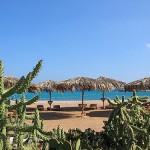DJENNE, Mali: The Great Mud Mosque of Djenne
Posted by: kirsty_wilson in Africa, tags: Deserts, Mali, Mosques, UNESCOWhere is Djenne?

The Great Djenne Mosque
Djenne is located in the West African country of Mali and is situated on the flood lands of the Niger and Bani rivers. At the end of the wet season, when the rivers have risen, it can result in Djenne becoming an island.
Djenne would have to be on the ‘must see’ towns of Mali (it is on my must see places of Africa), largely for the ‘Great Mosque’ that is made of mud and is the largest mud brick structure in the world. Djenne is a UNESCO Heritage Listed town not only for the mosque but for the fact that it became a market centre and an important link in the trans-Saharan gold trade.
An ideal day to visit the town is on a Monday when it is market day and the town becomes a bustling, energetic feast for the senses. Cars, buses, people and animals all converge to the market square that is dominated by the mosque to buy and sell their goods.
Map
TravelTipsPlus Google Map of Djenne
One Great Reason to Visit Djenne
One great reason to visit Djenne if it’s not solely to view the great Djenne, mud brick mosque that dominates the market square.



 Entries (RSS)
Entries (RSS)